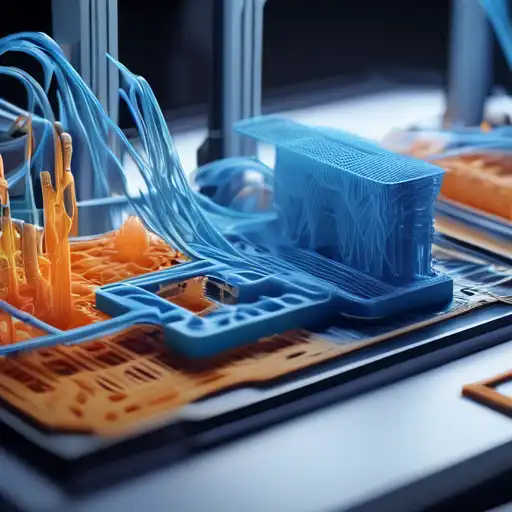Introduction to 3D Printing
3D printing, also known as additive manufacturing, is a process of creating three-dimensional objects from a digital file. This innovative technology builds objects layer by layer, offering unparalleled flexibility in design and production. From prototyping to full-scale manufacturing, 3D printing is revolutionizing industries worldwide.
The Process Behind 3D Printing
The journey of 3D printing begins with a digital model, typically created using computer-aided design (CAD) software. This model is then sliced into thin layers by specialized software, which the 3D printer reads to construct the object layer by layer. Materials used can range from plastics and metals to ceramics and beyond, depending on the printer's capabilities.
Types of 3D Printing Technologies
- Fused Deposition Modeling (FDM): The most common method, using a thermoplastic filament.
- Stereolithography (SLA): Uses a laser to cure liquid resin into hardened plastic.
- Selective Laser Sintering (SLS): Fuses powdered material using a laser.
Applications of 3D Printing
3D printing's versatility allows for its application across various sectors. In healthcare, it's used for creating prosthetics and even bioprinting tissues. The automotive and aerospace industries utilize it for lightweight parts production. Furthermore, the fashion industry explores 3D printing for innovative designs and accessories.
Benefits of 3D Printing
- Customization: Enables the production of personalized items without additional costs.
- Speed: Rapid prototyping accelerates the development process.
- Waste Reduction: Additive manufacturing minimizes material waste compared to traditional methods.
Challenges and Future Directions
Despite its advantages, 3D printing faces challenges such as material limitations and high costs for industrial-grade printers. However, ongoing research and development promise to overcome these hurdles, paving the way for more sustainable and efficient manufacturing solutions.
As we look to the future, 3D printing continues to break barriers, offering a glimpse into a world where the only limit is our imagination. Its potential to transform industries and improve lives is immense, making it a cornerstone of modern manufacturing and innovation.
For more insights into the latest in technology and manufacturing, explore our technology section.
